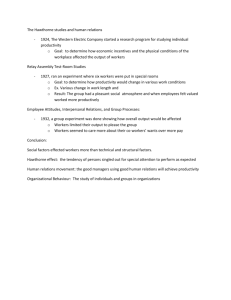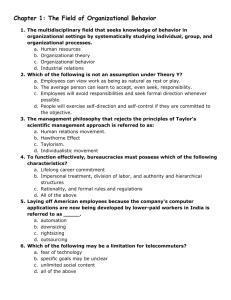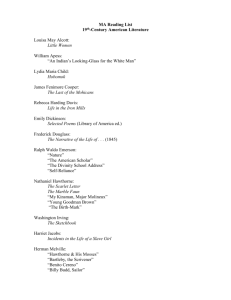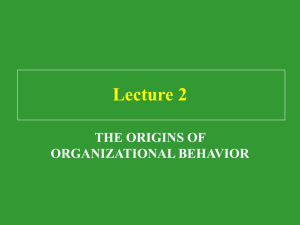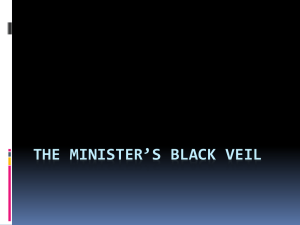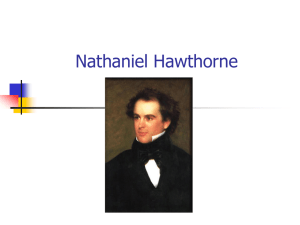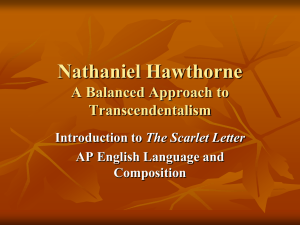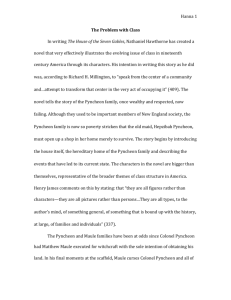Nathaniel Hawthorne (1804—1864 )
advertisement
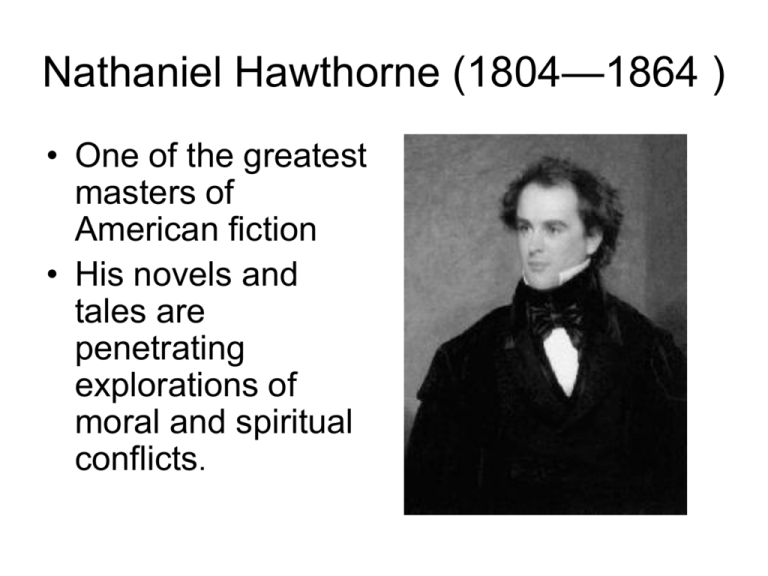
Nathaniel Hawthorne (1804—1864 ) • One of the greatest masters of American fiction • His novels and tales are penetrating explorations of moral and spiritual conflicts. Bowdoin College in Maine House of Seven Gables Major works: novels • Mosses from an Old Manse (1846) • The Scarlet Letter (1850)--His masterpiece, which established him as the Leading American native novelist of the 19th century • The House of the Seven Gables (1851) • Blithedale Romance (1852) • Marble Faun (1860) Major works: short stories • • • • Young Goodman Brown (1835) The Minister’s Black Veil (1836) Dr. Rappaccini’s Daughter The Celestial Rail-Road (1843) ANTI-TRANSCENDENTALISM • Evil Exists • Nature is not always good • Pessimistic Outlook Hawthorne’s Point of View • He has a “black” vision of life and human beings. In almost every book he wrote, Hawthorne discusses sin and evil. • One source of evil that Hawthorne is concerned most is overreaching intellect, which usually refers to someone who is too proud, too sure of himself. Chillingworth is a specimen of Hawthorne's chilling, cold-blooded human animals. • Hawthorne's view of man and human history originates, to a great extent, in Puritanism. He believed that “the wrong doing of one generation lives into the successive ones”. Themes in Hawthorne’s Writings • Moral allegories——a story where everything is symbol, used commonly to instruct especially in religious matters • The sinful man • Hypocrisy • The Dark side of human nature • Religion in nature Hawthorne’s Writing Style • A man of literary craftsmanship, extraordinary in the use of symbol: symbols serve as a weapon to attack reality. It can be found everywhere in his writing. Revelation of characters’ psychology: he is good at exploring the complexity of human psychology. The use of the supernatural mixed with the actual. His stories are parable (allegory)——to teach a lesson Use of ambiguity to keep the reader in the world of uncertainty——multiple point of view
